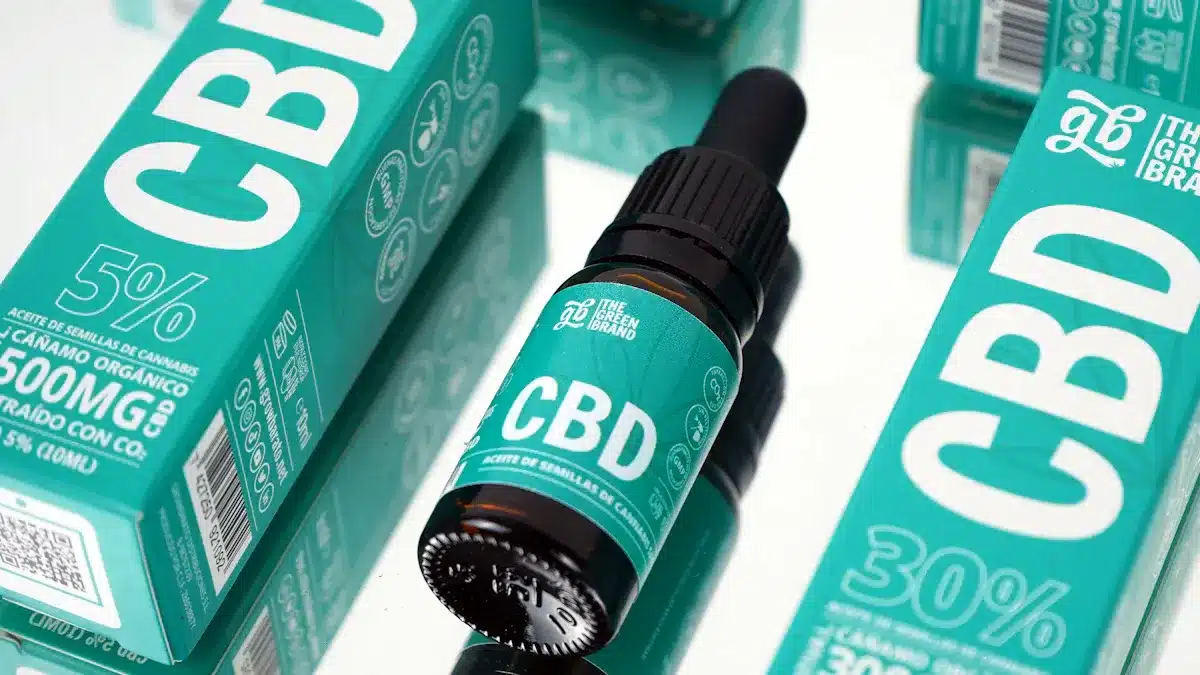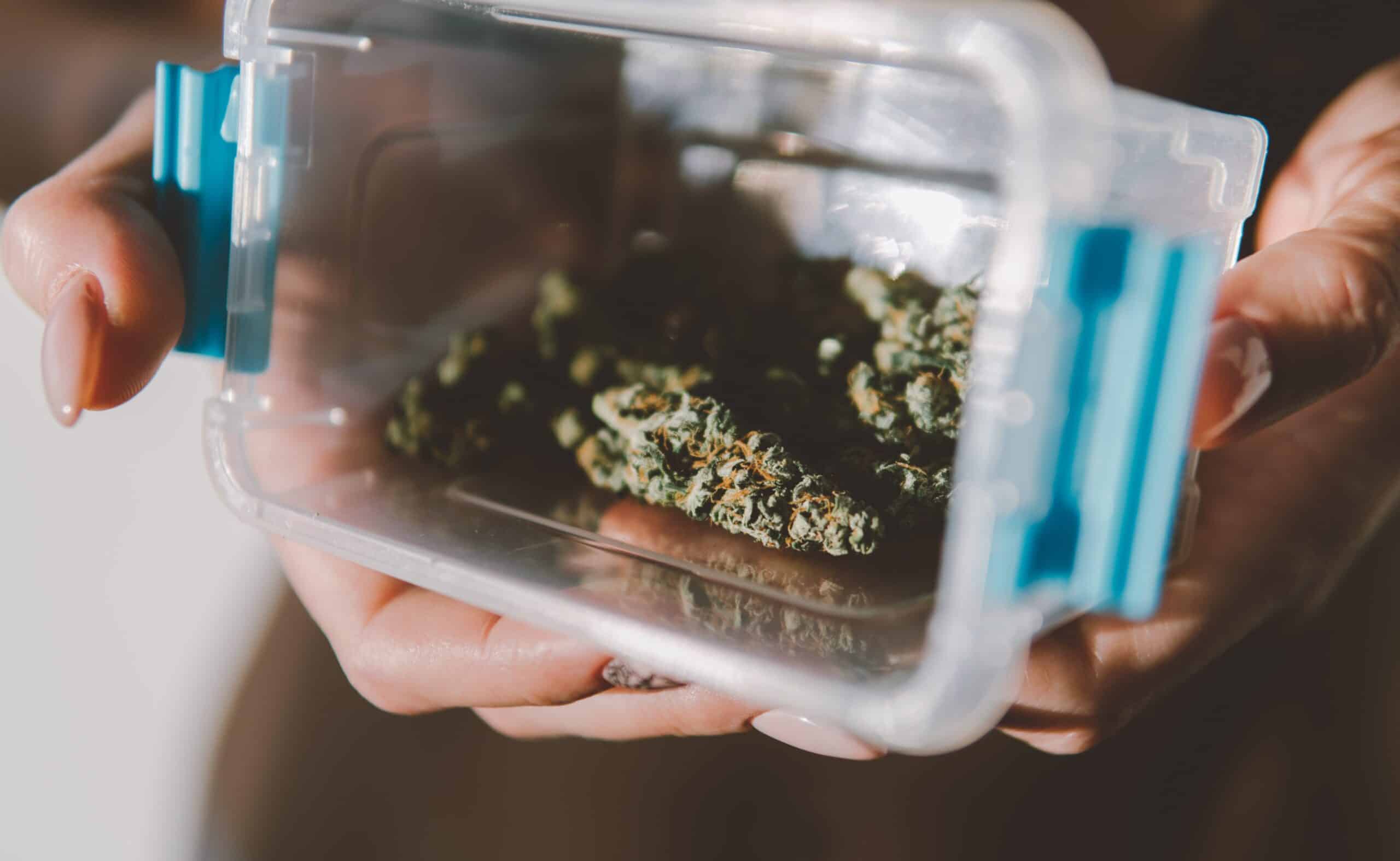
Choosing the right materials for cannabis packaging is very important. It helps keep the product fresh and makes customers happy. Glass, Mylar, recyclable plastics, and hemp-based materials are strong and eco-friendly. These materials also follow packaging rules. About 82% of people will pay more for green packaging. This means using eco-friendly options is now a must. The U.S. cannabis packaging market may grow to $9.30 billion by 2030. This shows people want new and creative packaging ideas. Hemployd makes custom packaging that is useful, green, and looks nice. This helps your brand shine in a tough market.
Through my experience working with cannabis brands, I’ve seen how material choices directly impact product freshness, compliance, and brand perception. Premium brands often invest in eco-friendly and durable materials not just for sustainability, but to create a strong market presence. Selecting the right packaging is no longer an option—it’s a necessity for brand success.
Principais conclusões
Pick materiais ecológicos like glass, Mylar, and hemp. These attract buyers and support the need for green packaging.
Glass keeps cannabis fresh by blocking air, water, and sunlight. This helps maintain its quality and strength.
Mylar bags are light and stop light and water. They work well for snacks and pre-rolled products.
Metal packaging is tough, reusable, and recyclable. It looks cool and helps your brand while being eco-friendly.
Child-proof and tamper-proof packaging keeps products safe. It also follows rules and earns customer trust.
Functional Cannabis Packaging Materials

Glass for Cannabis Packaging
Benefits of glass for preserving cannabis products
Glass is a strong and safe material for cannabis packaging. It doesn’t absorb or react with cannabis, keeping it pure. Glass seals tightly, stopping air and moisture from getting in. This helps prevent cannabis from losing its quality over time. It also blocks UV light, which keeps the flavor and strength intact. Using glass can keep cannabis fresh longer and stop mold from growing. This ensures customers get high-quality products every time.
From my work with premium cannabis brands, glass packaging is often their top choice for maintaining product integrity. Unlike plastic, it doesn’t interact with the product, ensuring purity and a longer shelf life. We’ve seen clients successfully elevate their brand by switching to frosted or tinted glass, which not only protects from UV exposure but also enhances the product’s premium appeal.
Common uses in cannabis packaging (e.g., jars, tincture bottles)
Glass is often used for jars and bottles in cannabis packaging. Jars are great for storing flowers because they keep them fresh. Bottles with droppers are perfect for oils and liquid extracts. These glass containers not only protect the product but also look nice. This makes glass a favorite for premium cannabis packaging.
Mylar Bags for Cannabis
Why Mylar is ideal for freshness and potency
Mylar bags are great for keeping cannabis fresh and strong. They block light, air, and moisture, which can harm cannabis. These bags also keep the right humidity to stop terpene loss. They protect against mold and condensation during shipping. Mylar bags can keep cannabis fresh for up to six months. This helps maintain its flavor and strength for customers.
Many brands underestimate the importance of Mylar in maintaining product quality. I’ve worked with clients who experienced a 15% drop in customer satisfaction due to packaging that didn’t properly preserve freshness. Switching to high-barrier Mylar bags with resealable features solved the issue, leading to improved product reviews and repeat purchases.
Applications in cannabis packaging (e.g., edibles, pre-rolls)
Mylar bags are used for many cannabis products like edibles and pre-rolls. They are lightweight, strong, and easy to transport. These bags are also good for displaying products in stores. Airtight zippers add extra protection, keeping cannabis fresh and safe.
Plastic Packaging for Cannabis
Types of plastics used in cannabis packaging
Plastic is a common choice for cannabis packaging. Types like PET and HDPE are strong and can be recycled. These plastics protect cannabis from air and moisture. Recycled plastics are becoming more popular, with PET and HDPE having a 30% recycling rate.
Balancing cost and functionality with plastic
Plastic packaging is affordable and works well for cannabis products. Eco-friendly plastics may cost more at first but save money later. They lower waste fees and shipping costs. Lightweight plastics also save space and speed up production. One company saved $500,000 a year by using better plastic packaging. This makes plastic a smart choice for many cannabis businesses.
We often help brands find the right balance between cost and sustainability. In my experience, businesses that invest in recycled plastics not only reduce long-term costs but also strengthen their eco-friendly branding. For instance, a brand we worked with replaced traditional plastic tubes with 30% post-consumer recycled PET and saw a noticeable increase in environmentally conscious customer engagement.
Metal Packaging for Cannabis
Strength and reusability of metal materials
Metal packaging is strong and can be used again. Aluminum cans and tins protect cannabis from light, air, and moisture. This keeps the product fresh and strong for longer. Metal also blocks UV rays, temperature changes, and humidity. These features help cannabis stay fresh and last longer for customers.
Metal is also eco-friendly because it can be recycled many times. Using aluminum and other metals helps reduce waste. It supports a circular economy, which is better for the planet. This makes metal a smart choice for brands that care about the environment.
Over the years, I’ve noticed a rising demand for metal tins, especially among high-end cannabis brands. Many companies are turning to metal for its premium aesthetic and sustainability benefits. One of our clients introduced aluminum tins for their concentrate products and saw a 20% increase in perceived brand value, proving that strong, reusable materials can enhance both sustainability and customer appeal.
Common uses (e.g., tins for concentrates, edibles)
Metal packaging works well for many cannabis products. Tins are great for concentrates because they seal tightly. This stops air from ruining the flavor and strength. Edibles like gummies or chocolates also stay safe in metal tins. The strong design keeps them from getting crushed during shipping.
Metal tins look nice and can be designed in unique ways. This helps your brand stand out in stores. Their fancy look makes them perfect for high-end cannabis products. Metal packaging is both useful and stylish, making it a great choice for your brand.
Dica: Use metal packaging for a strong, green, and stylish option.
Eco Friendly Packaging for Cannabis
Recyclable Cannabis Packaging Materials
Examples of recyclable options (e.g., PET, glass)
Recyclable materials are important for eco friendly packaging. PET is a strong, light plastic that is easy to recycle. It helps cut down on waste. Glass is fully recyclable and can be reused many times. It keeps its quality even after recycling. Both PET and glass protect cannabis and help the planet by reducing harm.
How Hemployd incorporates recycling into packaging solutions
Hemployd focuses on eco friendly packaging with recyclable materials like PET and glass. Their smart designs keep packaging useful while being green. By using recyclable materials, Hemployd helps businesses lower their carbon footprint. This also meets customer demand for better, greener packaging.
With sustainability becoming a priority, many cannabis brands struggle to find packaging solutions that are both eco-friendly and practical. At Hemployd, we’ve helped brands transition to fully recyclable packaging by combining glass jars with compostable labels and biodegradable tamper-evident seals. This holistic approach ensures sustainability without compromising compliance or design aesthetics.
Nota: 72% of buyers now want sustainable packaging. Recyclable materials are a great choice for your brand.
Compostable Packaging for Cannabis
Environmental benefits of compostable materials
Compostable packaging is great for the environment. These materials break down into natural matter, improving soil and cutting waste. Unlike regular plastics, compostable options release fewer harmful gases. They also leave no toxic leftovers. This makes them a smart pick for eco friendly embalagens de cannabis.
One challenge I’ve observed with compostable packaging is balancing sustainability with durability. Some brands switched too quickly to plant-based plastics without testing for moisture resistance, leading to product spoilage. That’s why we always recommend rigorous testing before adopting new materials to ensure both eco-friendliness and functionality.
Examples of compostable options (e.g., plant-based plastics, paperboard)
Plant-based plastics and paperboard are top compostable choices. They are used for items like pre-roll tubes and safe containers. These materials meet strict rules to break down safely. Choosing compostable packaging helps the planet and supports the move toward sustainability.
Dica: Mushroom-based containers are a cool compostable option. They create 90% less carbon than regular plastics.
Hemp-Based Packaging Solutions
Why hemp paper and bioplastics are sustainable choices
Embalagens à base de cânhamo is a great green option. Hemp paper grows quickly and doesn’t cause deforestation. Bioplastics made from hemp are strong, break down naturally, and lower harmful gas emissions. These materials are safe and meet child-resistance rules. They also support eco friendly goals.
At Hemployd, we’ve seen an increasing number of brands exploring hemp-based packaging, not just for sustainability but for brand storytelling. One of our clients used hemp paper tubes with custom-embossed designs to highlight their organic brand identity, which helped them gain traction in eco-conscious markets.
Hemployd’s hemp-based packaging options
Hemployd provides high-quality hemp paper and bioplastic packaging for cannabis. Their hemp-based designs are both useful and green. Using hemp helps your brand stay eco-friendly while keeping packaging strong and reliable.
Callout: Hemp-based packaging boosts your brand’s green image and supports a circular economy.
Aesthetic Appeal in Cannabis Packaging
Luxury Cannabis Packaging Materials
Materials that convey a premium feel (e.g., glass, metal)
Luxury packaging makes your brand look special and high-quality. Vidro e metal are great choices for this. Vidro shows off the purity of cannabis and makes it feel fancy. Metal is strong and keeps out light, air, and moisture. It also lasts long and can be recycled. These materials protect the product and give it a classy look that customers love.
Packaging Material | Benefícios |
|---|---|
Vidro | Shows purity and boosts product quality |
Metal | Strong, recyclable, and blocks harmful elements |
How Hemployd enhances brand identity with luxury packaging
Hemployd creates fancy cannabis packaging that matches your brand’s style. They use vidro e metal with creative designs to make your products stand out. Their packaging is both useful and stylish. This helps you attract customers who care about quality and elegance.
Working with premium cannabis brands, I’ve observed that investing in luxury packaging significantly boosts customer perception. One client introduced embossed metal tins for their high-end flower line and saw a 25% increase in repeat buyers, demonstrating how well-crafted packaging can directly influence consumer loyalty.
Dica: Fancy packaging protects your product and makes it look valuable.
Minimalist Cannabis Packaging Designs
Using simple, eco-friendly materials for a clean look
Minimalist packaging is simple and good for the planet. Using recycled paper or biodegradable plastics cuts waste and keeps products safe. This “less is more” idea is popular with eco-friendly buyers. It also costs less to make and looks modern and clean.

Examples of minimalist designs in the cannabis industry
Many brands now use minimalist designs to meet customer needs. For example, plain kraft paper bags or clear jars with simple labels are trendy. These designs use fewer materials but still work well. About 82% of people will pay more for green packaging, making this a smart choice.
Minimalist designs use fewer materials.
They attract eco-conscious shoppers.
They follow rules while looking nice.
Natural and Organic Packaging Appeal
Materials that align with natural branding (e.g., kraft paper, hemp)
Natural packaging like kraft paper and hemp fits eco-friendly brands. Kraft paper has a simple, earthy look. Hemp is strong and breaks down naturally. These materials make your brand look green and meet the demand for sustainable packaging.
Balancing aesthetics and functionality in packaging
Good natural packaging looks nice and works well. Hemp is tough, and clear labels build trust with buyers. Adding QR codes can teach customers about your product and its eco-friendly features. This mix of style and function keeps customers coming back.

Nota: 72% of buyers want green options, so natural packaging helps your brand grow.
Compliance and Practicality in Cannabis Packaging
Child-Resistant Cannabis Packaging
Materials that meet child-resistant standards
Embalagem resistente às crianças is crucial for cannabis products. It stops kids from opening containers but stays easy for adults. Strong materials like PET and HDPE are often used. These materials meet safety rules and last a long time. Designs include push-and-turn lids, squeeze-pull locks, and dual-action closures. These features follow CPSC rules, making sure 85% of kids can’t open them, but 90% of seniors can.
Caraterística | Descrição |
|---|---|
Mechanical Design | Uses push-and-turn lids, squeeze-pull locks, and dual-action closures. |
Normas de ensaio | Meets CPSC rules, ensuring 85% of kids can’t open them, but 90% of seniors can. |
Smart Technology | Adds digital locks, fingerprint scans, and NFC-enabled features for extra safety. |
Nota: Laws require child-resistant packaging to stop kids from eating cannabis by mistake.
Hemployd’s compliant packaging solutions
Hemployd makes child-safe containers that follow strict safety laws. Their designs include seals that show tampering and advanced locks for extra security. They use materials free of PFAS and BPA, meeting FDA food safety rules. These options help businesses and customers feel safe and confident.
Tamper-Proof Cannabis Packaging
Importance of tamper-evident seals
Tamper-evident seals are very important for cannabis packaging. They show if a product has been opened or changed before buying. These seals also lower the chance of contamination or kids eating it by accident. By adding a clear barrier, tamper-evident seals protect products and build customer trust.
Materials and designs for product safety
PET and aluminum are great for tamper-proof packaging. These materials are strong and work well with tamper-evident seals. Designs often include moisture control and barriers to keep products fresh. Hemployd uses these features to make packaging safe but still easy for adults to use.
Dica: Combine tamper-evident seals with child-resistant locks for the best product safety.
Labeling and Legal Requirements for Cannabis Packaging
How materials impact labeling (e.g., printability, durability)
The materials used in packaging affect how labels look and last. Glass and PET have smooth surfaces, making labels clear and durable. These materials keep important details like warnings and dosage readable. Eco-friendly options like hemp paper also work well for printing and support green goals.
Ensuring compliance with state and federal regulations
Cannabis packaging must follow strict state and federal laws. Labels need to show product weight, THC levels, and safety warnings. Hemployd ensures their packaging meets these rules while looking professional. Their knowledge helps businesses avoid legal problems and stay compliant.
Callout: Good labeling builds trust, follows laws, and improves your brand’s reputation.
The best cannabis packaging depends on your product and rules. Materials like glass, Mylar, and hemp are strong and green. People now prefer eco-friendly packaging because of stricter laws. Studies show nice designs make people buy more. Hemployd offers custom packaging that is safe, pretty, and eco-friendly. Picking the right materials can make customers happy and save money. Work with Hemployd to create packaging that fits your brand.

FAQ
What makes packaging eco-friendly?
Eco-friendly packaging uses materials that are safe for nature. These include items that can be recycled, composted, or break down easily. They create less waste and often come from plants like hemp or paper. Using these materials helps your brand support green goals.
Can eco-friendly cannabis packaging meet legal requirements?
Yes, eco-friendly packaging can follow cannabis rules. Materials like PET, glass, and hemp-based options meet safety laws. They also work with child-safe and tamper-proof designs. Hemployd makes sure packaging is both legal and eco-friendly.
How does eco-friendly packaging benefit your brand?
Eco-friendly packaging attracts customers who care about the planet. It improves your brand’s image and shows you care about nature. Studies show 72% of people like green options, helping boost sales and loyalty.
Are eco-friendly materials durable for cannabis products?
Eco-friendly materials like glass, metal, and plant-based plastics are strong. They keep cannabis safe from air, water, and light. These materials keep products fresh and strong while being good for the planet. Hemployd offers tough, green packaging for your needs.
What are some examples of eco-friendly cannabis packaging?
Examples include hemp paper, plant-based plastics, and recyclable glass jars. Compostable paper and aluminum tins are also common. These choices cut waste and support green efforts. Hemployd offers many eco-friendly packaging options.




